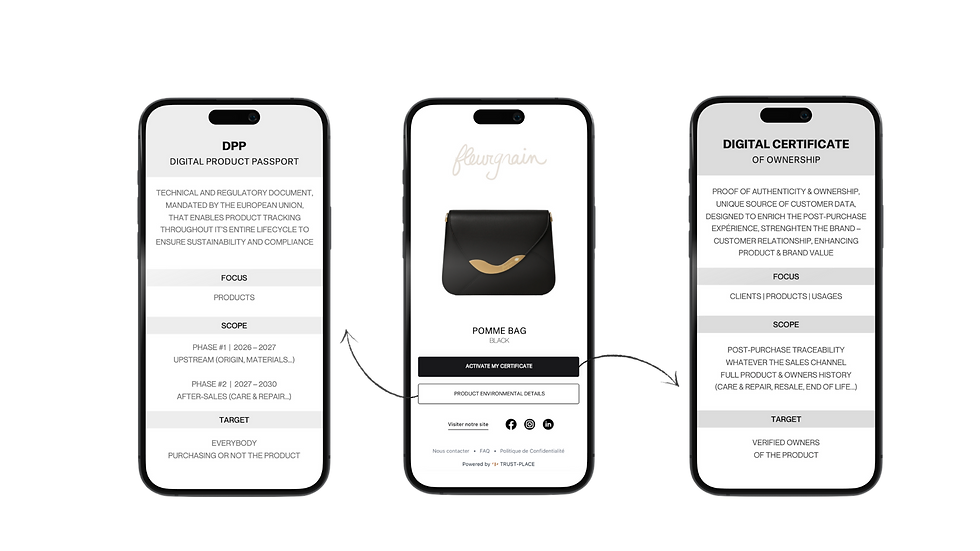DPP vs Digital Certificate: What’s the Difference?
- elelloum
- Jan 10
- 1 min read
Updated: Aug 22
As European regulations push the fashion and luxury industries toward greater transparency, two instruments stand out: the Digital Product Passport (DPP) and the Digital Certificate of Ownership. While they may appear similar, they serve distinct purposes that complement one another.

The Digital Product Passport: a regulatory framework
The DPP is a technical and regulatory document mandated by the European Union. It consolidates information on a product’s origin, materials, and suppliers, ensuring full upstream traceability. Publicly accessible via a QR code or a dedicated webpage, its primary goal is to guarantee compliance and inform consumers.In practice, the DPP enables brands to demonstrate their commitment to sustainability while meeting legal requirements.
The Digital Certificate: a post-purchase value driver
Unlike the DPP, the Digital Certificate of Ownership is activated at the time of purchase and is accessible only to the buyer. It serves as both proof of authenticity and a unique source of customer data, while also unlocking exclusive services such as resale, after-sales support, repair, maintenance, or product end-of-life.Beyond downstream traceability, it provides brands with a powerful lever to build customer loyalty, fight counterfeiting, and strengthen brand-customer relationships.
A common purpose, distinct benefits
The DPP addresses compliance and transparency.The Digital Certificate, on the other hand, supports competitiveness, differentiation, and customer engagement.
Together, they define a new ecosystem where digital innovation and sustainability go hand in hand.




